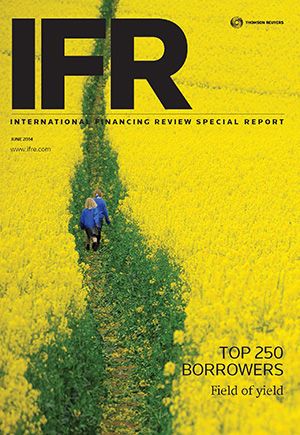The bigger the better – in everything. Freddie Mercury, the late lead singer of Queen, wasn’t alone in judging the world and its wares solely on the merit of size. Take bond investors. When the Federal Reserve announced its intention to begin tapering its quantitative easing programme last May, expectations were of an inexorable rise in US yields.
For debt investors, this offered the promise of higher returns on their bond purchases – at least those denominated in US dollars. But Treasury yields, after spiking last summer, and again when QE tapering kicked in in December, settled down at a lower rate than many had expected.
For market participants, this has meant another year where the hunt for yield grinds on.
With cash-rich accounts seeking alternative strategies to optimise their returns, the knock-on effect has been to compress spreads, meaning that the higher-yielding asset classes are not as high yielding any more, thus adding to the downward spiral.
While the US has been gradually moving to exit its QE programme, other jurisdictions around the globe have been continuing to play a role, recent pronouncements from the European Central Bank being a case in point that serve to underpin the appeal of the credit markets.
The upshot has been high-yield transactions that price at levels historically achieved only by the highest of high-grade borrowers and anything with even a modicum of yield on offer being snapped up in frenzied competition.
The boot is firmly on the issuer’s foot, something that has been a boon to banks, for example, which have seen their regulatory-driven capital-boosting exercises welcomed with open arms as investors scour the markets for any sort of meaningful returns.
Yields on Additional Tier 1 paper have ratcheted in and book sizes show little sign of shrinking, as more and more fund managers relent and join in an asset class that was once the preserve of a specialised few.
While US tapering concerns hit emerging markets harder than most at first, the wobble was short-lived and buyside aspirations overcame fears of both a regulatory or geopolitical nature.
The Ukraine/Russia situation, while not entirely shrugged off, did not cause the ructions it might have done had investors been of a different mindset. The fact that the corollary of the political posturing was that Russian credits – which generally account for some 30% of EEMEA volumes – were, in effect, shut out of the market, merely meant others seized the opportunity to fill the void, thereby addressing their own needs as well as those of investors. The markets, it appears, abhor a vacuum.
Another asset class worthy of note for its resurgence is securitisation, a sector partly blamed for causing the financial crisis, both at the time and in the intervening years. Now there has been a move towards reconciliation, and it is seen as a possible way to unlock funding for SMEs. As long as transparency and quality can be assured, it is once again being viewed as a credible funding avenue. With the ECB the latest to add a positive voice – albeit in a manner lacking in detail – hopes are high of continued growth.
An area that has already experienced an explosion in activity is leveraged finance; volumes grew 72% in 2013. It has continued in a similar vein since, albeit at a reduced pace, and was sufficiently visible for regulators to fire a few warning shots across its bows. Even Fed Chair Janet Yellen noted the reach for yield and concerns have been voiced regarding the deterioration of terms and structures and a move towards over-leveraged deals.
As the pendulum has swung the way of issuers, so lower yields have been accompanied by looser covenants in a win-win for borrowers.
A move towards safe and sound lending practices is the order of the day, although such is the need to maximise returns in yield-hungry, cash-rich markets that some will be tempted by situations that they would not normally consider.
The truth of the matter is that returns everywhere are lower and that it is the sellside that benefits.
To see the full digital edition of the IFR Top 250 Borrowers Report 2014, please click here.
To purchase printed copies or a PDF of this report, please email gloria.balbastro@thomsonreuters.com
